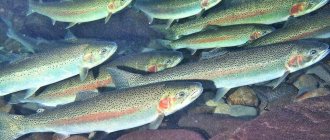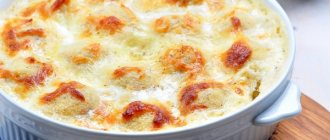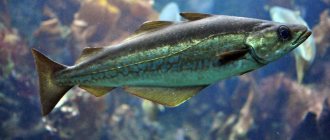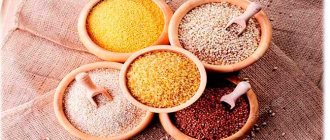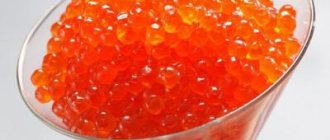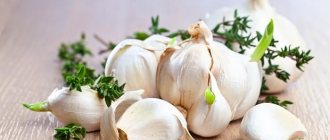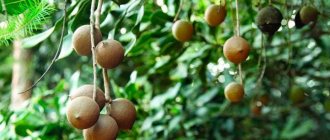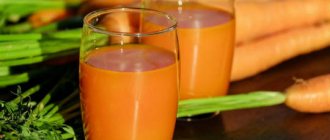The benefits of pollock
They are part of the large cod fish family.
It also includes hake, burbot haddock, pollock and others. Pollock is one of the most popular commercial fish found in the Pacific Ocean. It has a rich chemical composition and an affordable price. It has become widespread because of its highly nutritious meat.
Due to its low calorie content in cooking, pollock is used to prepare appetizing and healthy dishes. Flour, minced meat, and delicacies are produced from it. It is good boiled, smoked, stewed, baked and fried.
As a marine fish found in the Northern Hemisphere, cod is distinguished by subspecies: Baltic, Arctic, Pacific, Atlantic. This is a predatory fish with a juicy, soft taste and delicate flesh.
This fish is valuable for its dietary meat and fatty liver. Its pulp is prepared in different ways: boiled, stewed, fried, smoked, baked in the oven. It goes well with other ingredients.
- Fish contains a large amount of vitamins and minerals that improve overall well-being and mood, and increase immunity.
- Iodine improves the functioning of the thyroid gland.
- Selenium helps remove toxins and has a positive effect on hair, nails and skin.
- The high potassium content affects the functioning of the heart, strengthening its muscles and blood vessels, and a decrease in swelling is observed.
- Calcium, fluorine and phosphorus are necessary to strengthen bones and tooth enamel. Phosphorus also helps maintain the beauty of nails and hair.
- Vitamin A improves visual acuity, and is especially necessary for the growth and healthy development of a young body.
- B vitamins strengthen the nervous system and improve the functioning of the gastrointestinal tract.
- Thanks to iron, the process of hematopoiesis improves, which is very important for anemia.
- Omega-3 and Omega-6 fatty acids reduce cholesterol levels and stimulate metabolic processes.
- It contains a lot of protein, which has a beneficial effect on brain function and the digestive system, and almost no carbohydrates. It helps athletes strengthen muscles and restore the body's resources after physical exertion.
- Pollock liver and caviar are useful. They are used for medicinal and cosmetic purposes. The liver is a storehouse of vitamin A.
- It is rich in vitamins and microelements that normalize the functioning of all systems of the human body. Its use strengthens the immune system, reduces the development of seasonal vitamin deficiency, colds and infectious diseases.
- Thanks to the large amount of protein, it is useful for people exposed to heavy physical and mental stress, and athletes.
- This is an easily digestible product that improves the functioning of the digestive system. The phosphorus it contains helps cleanse the body of harmful substances.
- Iodine improves brain activity and blood supply to the brain, and also prevents senile dementia.
- Magnesium, sodium, potassium and healthy fatty acids improve the functioning of the heart and blood vessels. Blood cholesterol levels decrease and blood pressure stabilizes.
- Cod ensures high-quality functioning of the nervous system. It is useful for stress, apathy, increased irritability, neuroses, and insomnia.
- The appearance of the skin, nails and hair structure improves.
- Phosphorus and calcium make bones stronger, strengthen cartilage tissue, and help the body recover faster from fractures.
- Iron helps normalize the hematopoietic system, regulates blood clotting, and prevents the occurrence of anemia.
- Vitamin E and other antioxidants protect body cells from free radicals and reduce the risk of cancer.
Benefits and harms for various diseases
Examples:
- Gout. Pollock is allowed in cases of pathology. The product is able to reduce inflammation and accelerate the excretion of uric acid salts. Only boiled, steamed, baked pollock, cooked without seasoning, brings benefits. You can eat 150 g once a week.
- Pancreatitis. It is acceptable to use for chronic diseases in remission. The product prevents the destruction of pancreatic tissue and facilitates the functioning of the gastrointestinal tract. Steamed and boiled dishes should be prepared, the consumption rate is 1-2 times a week, 150 g each. In case of exacerbation, fish products are harmful.
- Diabetes. Pollock helps eliminate excess weight, prevent the development of associated complications, and reduce cholesterol and sugar levels. You can eat 100–150 g of fish every 2–3 days. Boiled, baked, steamed fillets are healthy. Fish broths are allowed once a week if diabetes mellitus is not accompanied by gastric pathologies.
- Gastritis. Fish accelerates mucosal regeneration and prevents the development of ulcers. You should eat the product 2 times a week, 150 g each. Prepare fillet without skin. During an exacerbation of gastritis, it is better to avoid pollock.
- Hypothyroidism. Fish helps prevent the development of complications and aggravation of the disease, as it saturates the body with the missing iodine and phosphorus. It should be included in the diet once every 2 days.
Glass or tin
Both types of packaging are available for sale. Which to choose? Glass is preferable. It is good because through it, as in the television “Show Behind Glass,” all the ins and outs of the participants are visible. In our case, color, consistency, and excess impurities are visible. The best color you see through glass is pink. If the contents are more orange, it means the manufacturer used dyes, which is not the best option. Moreover, according to GOST, dyes should not go into pollock caviar.
Can. Here the matter is more complicated. Like with a watermelon: you cannot open it before payment; the quality can only be judged by indirect signs. First of all, study the expiration dates, composition, and then shake the tin jar near your ear. The watermelon is tapped and shaken here. If something gurgles inside, this is a bad sign, there is already something spoiled and slimy there.
Compound
Since we are talking about which is healthier, pollock or cod, we should consider the chemical composition of both representatives of the cod genus. Each of them contains vitamin A, thiamine and other B vitamins in sufficient quantities, including cobalamin and pyridoxine, ascorbic acid, vitamins E, H and PP.
The mineral composition is also rich, and all cod varieties contain large amounts of iodine for the thyroid gland, calcium for joints and bones, and phosphorus to improve brain function. Many people today are thinking about extra pounds, so the question of which is better, cod or pollock, for them comes down to which has more calories. Nutritionists assure that both fish have the same calorie content, so they can be safely included in the diet.
Sometimes caviar is also added to pollock caviar. It would be nice to have black or red salmon, but no, cod. The latter improves the color of the product and dampens a little bitterness. If, when opening the jar, you find that pollock caviar is bitter, do not be sad. This is not a sign of spoilage, but on the contrary, this is how it tastes initially.
What else can be said about the optimal composition of pollock caviar? Just now, as in childhood, I became interested in condensed milk. I bought several different cans and drank the viscous product just like that, or with tea. The most delicious was condensed milk with the simplest composition: whole skim milk and sugar. No vegetable fats, dyes or anything else. This condensed milk is truly finger-licking good!
The simplicity of the composition of pollock caviar is also a plus. Good caviar contains caviar itself, sunflower oil, and a preservative. And what? You can’t go anywhere without it now, it’s added to everything we eat, and soon, probably, they’ll learn to give an injection into every chicken egg with a bit of a preservative. Retail chains do not want to incur losses due to the short shelf life of products and dictate their terms.
Let's return to caviar. Each jar has a shelf life. If the product was pasteurized in production (that is, it was heated in special chambers for an hour at a temperature of 70 degrees), then the shelf life of such caviar automatically increases. The manufacturer indicates it on the label, usually 12 months. Without pasteurization, the shelf life is halved.
A little about cod representatives
In the depths of rivers, seas and oceans live a huge number of fish of different varieties, and even unreasonable human intervention has not practically disturbed the composition of the ichthyofauna, although its representatives have become much smaller. Among the aquatic inhabitants there is a hierarchy - some fish have a high value and are valued by gourmets with deep pockets, others, on the contrary, become the people's fish. If the first do not understand a festive table without expensive fish delicacies, including red and black caviar, then others are interested in what is better pollock or cod caviar.
Before answering this question, let’s look at the cod representatives themselves and compare them with salmon fish. Many people believe that red fish and its by-products are of great value, but in fact this is far from the case, and white fish contains no less useful substances, and in some cases even more. Cod caviar is worth a lot - it’s a real delicacy and a source of a huge amount of nutrients, the same applies to cod meat, so the question of which is tastier is heard more and more often, and in different social circles, since the price of these products is more reasonable.
Possible contraindications and who should not
The main contraindication is individual intolerance to the components included in the chemical composition of pollock and cod.
Salted and fried pollock, and especially its caviar, is contraindicated for hypertension, stomach ulcers, and kidney disease. People suffering from these diseases should stew or boil it. You should not include cod in your diet if you have kidney problems, gallbladder disease, or hypotension.
Pollock liver is saturated with fat, and this is harmful for gallstone disease. Cod liver is not recommended for people who have an excess of calcium and vitamin D in their bodies.
Smell
Particular attention should be paid to the smell after opening the can. Slightly sour, sweetish, sharp - all these are signs of defect, “delay.” Pollock is a fish. But natural fish should simply smell like fish, and so should its caviar. This may sound like a tautology, but good pollock fish caviar smells like fish and nothing else.
Pollock caviar is not the most glamorous dish, of course. I wouldn’t serve it on a festive table, say, on New Year’s, when a lot of guests come, or for some other celebration such as an anniversary. But for everyday use the product is simply wonderful! There are few calories in caviar; we can consider it a dietary item, full of easily digestible protein.
How to eat pollock caviar so that not with spoons, but delicately? Take a fragrant piece of bread, lightly spread a thin layer of aromatic butter on top with a light movement of a knife, then apply a little pollock caviar. Spread the caviar in a thin film over the surface of the sandwich. Use it with sweet tea and you will understand that there are simple, but very tasty, healthy and inexpensive things that bring pleasure when consumed. Pollock caviar is one of them.
What is more useful and for whom?
Pollock and cod are recommended for people who want to lose weight. They contain few calories, fish is easily digested, stimulating the stomach and improving metabolism.
Due to its hypoallergenic nature, pollock fillet is preferable to children from an earlier age than cod fillet. Pollock can be given from 7-8 months, cod from 9-10 months.
Both types are useful for men - to prevent impotence and maintain the health of male organs.
During pregnancy and lactation, cod and pollock fillets are useful, as they help form the baby’s skeleton. When fed with mother's milk, the baby will receive all the substances necessary for its development. But the fish should not be salted, and caviar and liver should not be eaten either.
So, pollock and cod are very healthy seafood, rich in vitamins and minerals and having few contraindications.
How to choose and store correctly
In stores you can find fresh frozen and chilled pollock. It is better to buy the first type of product. According to the standard, the fish is caught, gutted and quickly frozen. Chilled carcasses in stores are pre-thawed pollock. This product spoils faster.
Other features to choose from:
- Consider the ice glaze. It should be light, without colored inclusions. Pink and red spots mean that the carcasses have been re-frozen.
- Pay attention to the thickness of the ice crust. The permissible weight of glaze is 4% of the weight of the product.
- Find out about the manufacturer. Frozen fish is sold by Chinese, Russian, and Japanese enterprises. It is better to choose domestically produced pollock.
- When buying fillets, look at its color. The fish meat is white in color; there should be no yellow streaks or brown spots on it.
- Pay attention to the size. The length is at least 20 cm. Small specimens are a product of poaching or another type of waterfowl. Also, you should not buy large pollock. Large specimens are old ones, the meat of which is tough and bland. Optimal size - 30 cm
Pollock comes to the market in boxes in the form of dense briquettes from fresh frozen carcasses. Due to the press, the fish may have a slightly curved shape. This is acceptable, but it is better to choose even specimens.
Pollock is sold without a head due to the peculiarities of its use and preparation:
- During the gutting process, the caviar and liver are removed. Internals sold separately.
- Eliminating the head allows you to save on shipping costs.
- The cut off part is sent for processing and production of animal feed.
Frozen carcasses can be stored for up to 9 months at a temperature of -18 degrees. Thawed items should be prepared on the day of purchase. Live pollock should be kept in the refrigerator in a container with ice for no more than 24 hours.
